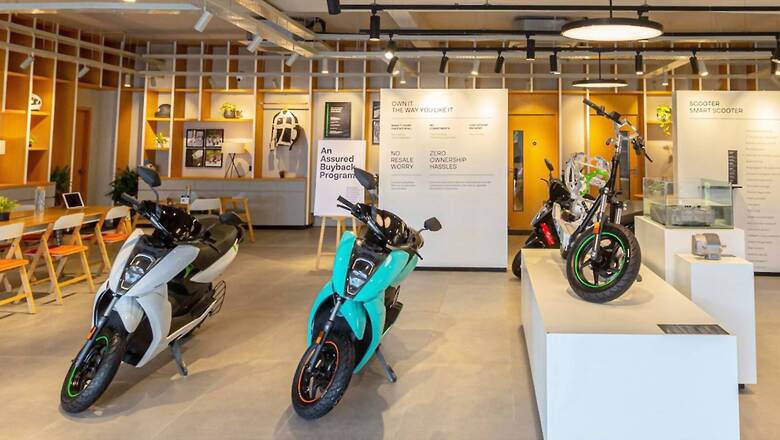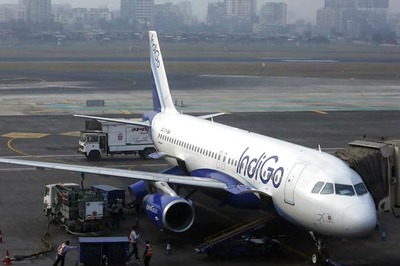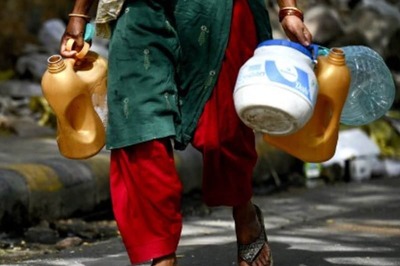
views
Electric two-wheelers could account for nearly 10 per cent of the overall two-wheeler sales in India in the next two to three years on the back of enhanced FAME II incentives and support from various states under their respective EV policies, Ather Energy Chief Executive Officer and Co-founder Tarun Mehta said on Tuesday. The upfront cost of an electric two-wheeler and that of a petrol counterpart is almost similar at present, which along with the added advantage of lower running cost make it more attractive for customers.
“I think in the next two to three years, there’s a very good chance overall, in the two-wheeler market, (that) almost 10 per cent sales could go electric," Mehta said in a virtual interaction while releasing Ather Energy’s first ‘Impact Report’ measuring the company’s overall social, environmental, and economic impact in 2019-2020. In 2020-21, total two-wheeler sales in India stood at 15,119,387 units as against 17,416,432 units in 2019-20, down 13.19 per cent, according to the Society of Indian Automobile Manufacturers.
With the new policies, the EV market has looked up across the country with more walk-ins at dealerships and more conversions, he said adding Ather itself witnessed over 60 per cent increase in demand month on month, which is now limited only by supply constraints. In June, the Department of Heavy Industry (DHI) had modified FAME II and increased the demand incentive for electric two-wheelers (e2W) to Rs 15,000 per kwh from the earlier uniform subsidy of Rs 10,000 per kwh for all EVs, including plug-in hybrids and strong hybrids except busses. Besides, it had also capped incentives for e2W at 40 per cent of the cost of vehicles, up from 20 per cent earlier.
On the other hand, the Gujarat government announced a demand incentive of Rs 10,000/kwh for e2W, electric three-wheeler (e3W), and electric four-wheeler (e4W) over and above any subsidies available from the central government, with the maximum ex-factory prices being capped at Rs 1.5 lakh, Rs 5 lakh and Rs 15 lakh respectively for the three-vehicle categories. Similarly, the Maharashtra government had also announced incentives of Rs 5,000/kwh on e2W, e3W, and e4W cars and goods carriers with maximum incentive per vehicle being capped at Rs 10,00, Rs 30,000, Rs 30,000, Rs 1.5 lakh, and Rs 1 lakh, respectively.
“With the increased incentives, we’ve hit a point where a comparable electric and petrol scooter now have roughly the same price," Mehta said citing the example of Ather’s 450 Plus electric scooter that costs Rs 1,07,000 in Gujarat and about Rs 1.1 lakh in Delhi, which are comparable to petrol counterparts in the 125 cc premium scooter segment. While upbeat on the outlook for the e2W segment, he said the only thing which is holding it back is more production and more product options.
“People need product options, different products for different segments," he said adding customers need enough variety and there has to be enough production output. In order to drive the market, Ather Energy said it plans to be present in 100 cities with a new product portfolio by FY2023 and add more safety features on its product like crash detection and SOS, tow detection, tyre pressure monitoring system, remote diagnostics.
Also Watch:
In this fiscal, the company plans to install 500 charging points across the country. It is also aiming to use 80 per cent of its energy consumption using solar energy and increase the ratio of recycled water to total water consumption by 84 per cent. The company said it has also “committed to diversity and inclusion, which has been broadened to include the diversity of thought, experience, gender, leadership, language and culture". It has approximately 30 per cent women employed in the manufacturing facility, Ather Energy said.
Read all the Latest News, Breaking News and Coronavirus News here.


















Comments
0 comment